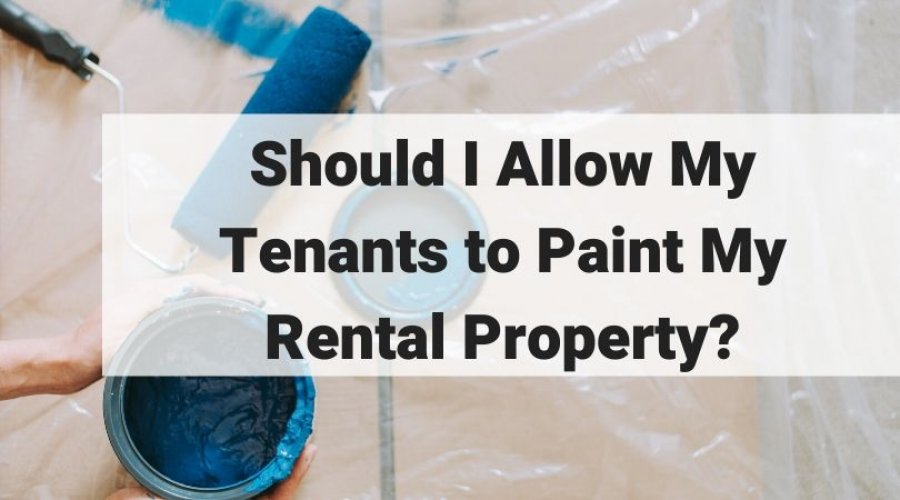
As a landlord, you'll be exposed to different types of tenants. Some are reticent and passive individuals, while others are more expressive and dominant. One of the latter may approach you and request to change the paint color of your unit.
Before agreeing readily, it will pay off to first weigh the risks and benefits of permitting your tenant to paint your rental property. This decision can lead to several changes, so it's worth your while to go over the possible scenarios.
Conditions in the Leasing Agreement
Firstly, take note of the terms outlined in the signed lease. Are there clauses that specifically address the alterations to be performed in your property? Some landlords include one of the following clauses:
Strictly no alterations
This clause restricts the tenant from conducting any changes to the property's condition. The property must remain the way it is upon the tenant's move out. Thus, repainting the property is not allowed in any way or form.
Alterations subject to approval
The decision rests solely on the landlord to allow the tenant to perform changes, including repainting the property. There will be negotiations with regards to:
- Who shoulders the painting labor and material cost
- When will the painting be performed
- What part of the property can be repainted
- Which paint colors are allowed
Painting is allowed, provided a non-refundable fee will be collected
A landlord is allowed to ask for a non-refundable deposit from the tenant for the painting project. However, note that some states restrict landlords from asking for a non-refundable deposit, so this is subject to the Landlord-Tenant Laws in a particular area.

Painting is allowed if it's shouldered by the tenant
The renter will cover all the costs of painting, including paying for any resulting damages if there are spills that occur on the furnishing or flooring of the rental unit. The landlord and tenant also need to discuss if reverting the paint color to its original shade is expected when the tenant moves out. Initiating those conversations makes for an easier way to come to conclusions regarding painting.
DIY Painting or Professional Painting Job
If you agree to a paint job, as a landlord, you must decide who will perform the task. Will the landlord permit a tenant to perform a DIY painting? Most would do so to save from labor expenses.
Some landlords, however, are particular about quality finishes and will only require professionals to perform the painting work. This decision will largely depend on the landlord's preferences.
Range of Permitted Paint Colors
A landlord can allow a tenant to alter the property by painting it for a more personalized touch. Still, there are restrictions, such as the range of paint shades permitted.
Most landlords choose simple and neutral color schemes to prevent color clashes with different furnishing brought by different tenants. Limiting the colors to neutral tones is also easier to maintain. Popular paint colors are off-white, beige, gray, brown and taupe.
Benefits of Allowing a Tenant to Paint a Rental Property
1. They are more likely to stay longer, given this autonomy – if you have more freedom, you're liable to stay longer in a certain place.
2. Tenants will enjoy a sense of home – choosing the paint colors in the rental property allows them to pick their favorite shades, eliciting further comfort.

3. They will be happier in being given this privilege – not all tenants are given the option of painting a rental unit according to their choice, so this brings joy to renters.
4. Other tenants may find the new paint color more attractive – trying new paint colors may result in the rental space being more appealing.
Risks in Allowing a Tenant to Paint a Rental Property
1. You'll find it costly to fix when painting results are sub-standard – when the painting work is below your expectations, you might decide to repaint, making it more expensive.
2. Reverting the paint color to its original shade, which is laborious – when renters only stay for a short period, this process can be time-consuming.
3. Needing to deal with accompanying damage on the floors and furnishing – if the paint job is sloppy, it can damage other areas of the property.
4. The property loses value from a bad paint job, making it unattractive – the paintwork can reduce the appeal of the rental unit.
Given these pros and cons, it can be confusing whether to agree to a tenant's request or not. Still, there are other options, such as encouraging a tenant to decorate the rental unit instead. He can buy well-made rugs, add a carpet, replace new curtains, decorate with beautiful paintings or set houseplants inside the house to make the place homier.
Create an Inventory
It's good practice to make an inventory of your property before a tenant's move in. If you decide to permit the painting of your rental property, you can refer to the documentation of recorded photos and videos.

This will prevent disputes and will be a good reference to your rental property's condition. It will be easier to compute deductions from the security deposit resulting from property damage, including paint jobs.
Bottom Line
Whether you allow a tenant to paint the property or not, there are consequences to the decision. If you don't mind the drawbacks and know how to resolve each issue, it won't be a future problem. Don't lose sight of the benefits in this case, but make sure to include specific clauses in the lease to guide the tenant on his limitations.
If your property is located in Central Florida and you need a professional property manager, contact State Property Management LLC. We can help you create a lease, attend to property maintenance, market your property and properly screen your tenants, among other services. Contact us at (407) 634 -2800 or drop us an email at customerservice@statemanagement.us. You can also visit our website at https://www.managecentralfloridaproperty.com/about.php to find more information about our range of property management services.